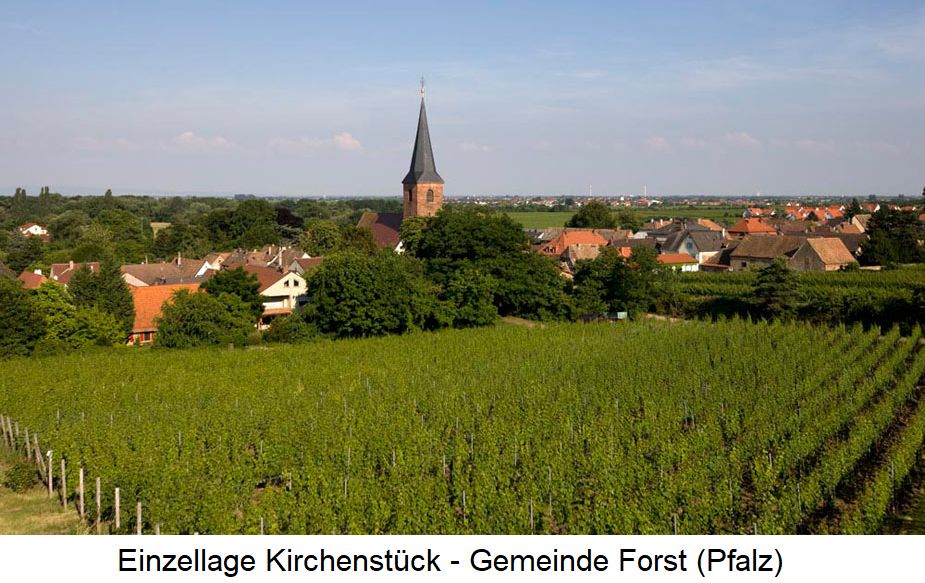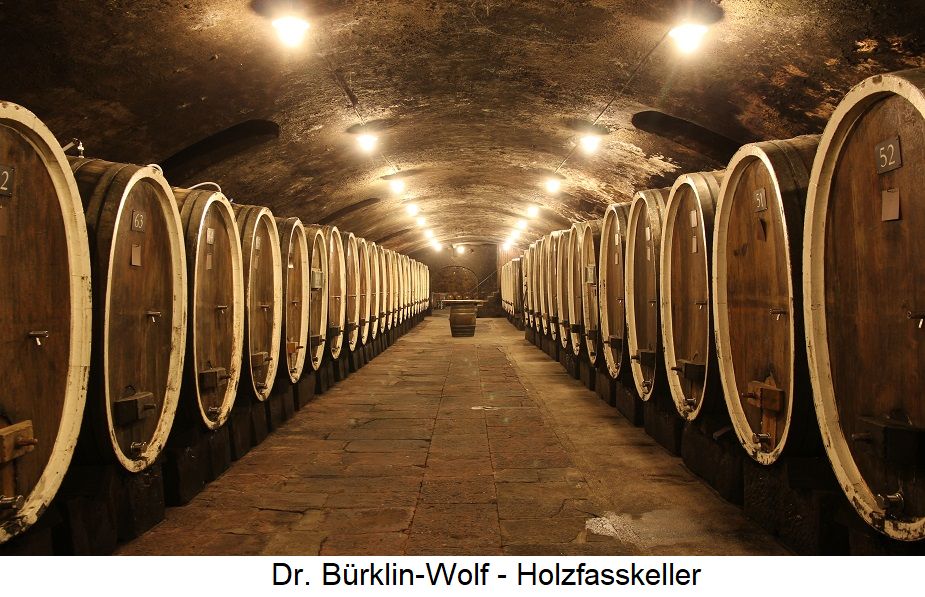The winery is located in the municipality of Wachenheim (Mittelhaardt-Deutsche Weinstraße) in the German wine-growing region of Pfalz. Its roots go back to the end of the 16th century to Bernhard Bürklin (1580-1636). His Renaissance house, built in 1606, still stands today. It was given its current name in 1875 when Luise Wolf (1848-1882) married Privy Councillor Dr Albert Bürklin (1844-1924). After the turn of the century, Dr Bürklin developed the estate into a top farm.
The next owner was the great-nephew of Privy Councillor Dr Albert Bürklin (1907-1979; see the family history in detail there). In 1990, it was taken over by his daughter Bettina Bürklin-von Guradze and her husband Christian Gurazde. The winery subsequently introduced comprehensive measures to improve quality and was the initiator of Grosses Gewächs Pfalz with the aim of a Palatinate vineyard classification. Today, the estate is one of the largest privately owned wineries in Germany. Steffen Brahner has been the managing director since 2008.
 The vineyards cover 85 hectares of vines. The vineyards have been classified according to the company's own strict criteria since 1994. They are categorised into Grands Crus and Premiers Crus according to the Burgundian system. The Grand Cru sites are Hohenmorgen, Kalkofen (Deidesheim), Jesuitengarten, Kirchenstück, Pechstein, Ungeheuer (Forst), as well as Gaisböhl in sole ownership and Reiterpfad (Ruppertsberg). The Premier Cru sites are Altenberg, Böhlig, Gerümpel, Goldbächel and Rechbächel in sole ownership (Wachenheim), Hoheburg (Ruppertsberg) and Langenmorgen (Deidesheim).
The vineyards cover 85 hectares of vines. The vineyards have been classified according to the company's own strict criteria since 1994. They are categorised into Grands Crus and Premiers Crus according to the Burgundian system. The Grand Cru sites are Hohenmorgen, Kalkofen (Deidesheim), Jesuitengarten, Kirchenstück, Pechstein, Ungeheuer (Forst), as well as Gaisböhl in sole ownership and Reiterpfad (Ruppertsberg). The Premier Cru sites are Altenberg, Böhlig, Gerümpel, Goldbächel and Rechbächel in sole ownership (Wachenheim), Hoheburg (Ruppertsberg) and Langenmorgen (Deidesheim).

The varieties cultivated and processed are Riesling (around 80% of the total area), as well as Pinot Noir, Pinot Blanc and Dornfelder. Since 2005, the entire vineyard has been cultivated according to the biodynamic rules of the BIODYVIN association. Certification is carried out by Lacon. The wines are produced and marketed in the four lines G.C. (Grand Cru), P.C. (Premier Cru), Village and Gutswein. In years with favourable weather conditions, noble sweet wines are also produced (Auslese). Bottle-fermented sparkling wines are also produced. The winery is a member of the two winegrowers' associations die Güter and VDP (Verband Deutscher Prädikatsweingüter).
Voices of our members

The Wine lexicon helps me to keep up to date and refresh my knowledge. Thank you for this Lexicon that will never end in terms of topicality! That's what makes it so exciting to come back often.
Thorsten Rahn
Restaurantleiter, Sommelier, Weindozent und Autor; Dresden